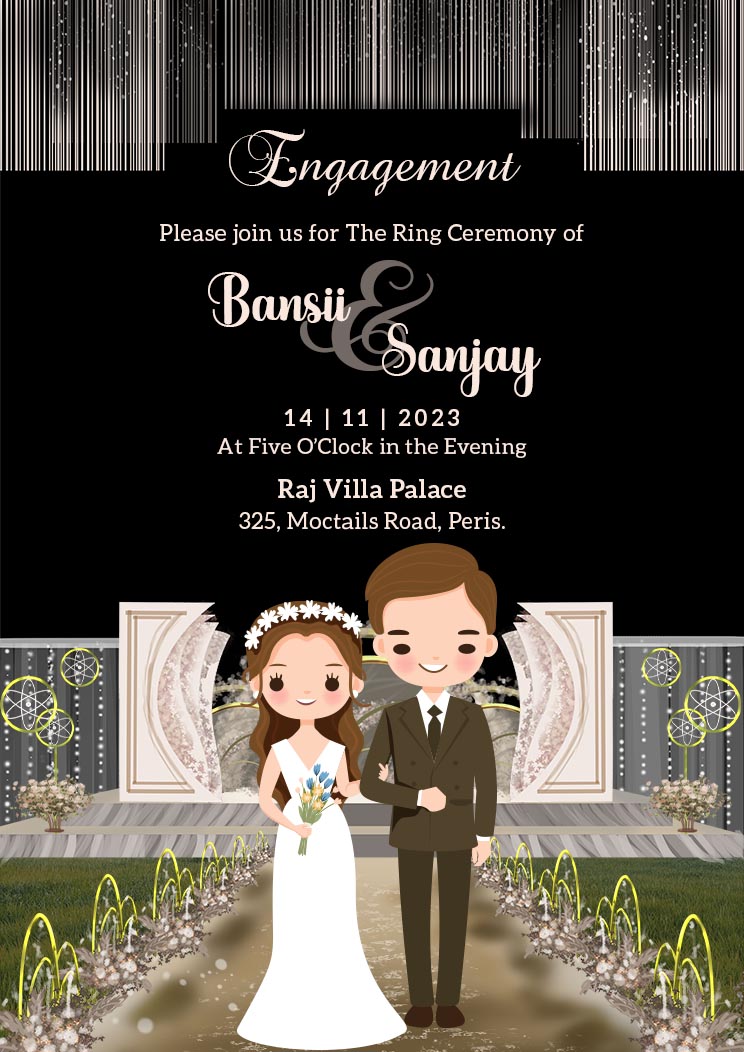When it comes to planning an event, whether it’s a wedding, a birthday party, or a corporate gathering, the invitation card is often the first impression your guests will receive. A well-designed invitation not only sets the tone for the event but also reflects the thought and care you’ve put into organizing it. Crafting stunning invitation cards requires a blend of creativity, design skills, and attention to detail. Let’s explore how you can create invitation cards that captivate and delight your guests.
Understanding the Purpose of Invitation Cards
Before diving into design, it’s essential to understand the purpose of your invitation card. An invitation serves as more than just a formal request for attendance; it’s a sneak peek into the style and theme of your event. It should convey key details such as the event type, date, time, location, and any special instructions for guests. Moreover, the aesthetic of the card—whether elegant, whimsical, modern, or vintage—should align with the overall vibe of your event. When your guests receive their invitation, it should evoke excitement and curiosity about the upcoming celebration.

Avoiding Common Pitfalls
When designing your Card design for invitation, be mindful of some common mistakes that can detract from their effectiveness and appeal:
1. Overcrowded Design
A cluttered design can overwhelm recipients and obscure important details. Maintain a balance between text and visuals. Use white space strategically to create a clean, breathable layout that guides the reader’s eye to key information.
2. Poor Readability
Fancy fonts and intricate designs can be appealing but may compromise readability. Always prioritize clarity over decoration. Ensure that your text stands out against the background and that crucial details like the date and time are easy to read at a glance.
3. Ignoring the Audience
Tailor your design to suit your audience’s preferences and expectations. A formal corporate event might require a sleek, professional look, while a child’s birthday party can be playful and colorful. Understanding your audience helps create a more resonant and engaging invitation.
4. Forgetting Essential Information
Double-check that all necessary details are included and accurate. This includes the date, time, venue, RSVP instructions, and any additional notes like dress code or parking information. Missing or incorrect information can cause confusion and inconvenience for your guests.

Choosing the Right Design Elements
1. Color Palette
Your color palette is a foundational element of your template design for invitation card. Choose colors that reflect the mood and theme of your event. For example, pastels might be perfect for a spring wedding, while bold hues could work well for a corporate gala. Consider the psychology of colors and how they align with the event’s atmosphere. Ensure that the colors are not only visually appealing but also cohesive with the overall design.
2. Typography
Typography plays a crucial role in setting the tone. Elegant script fonts can convey sophistication and romance, while modern sans-serif fonts might suggest a contemporary and laid-back event. When choosing fonts, ensure readability and consistency. Limit your design to two or three fonts to maintain a clean and professional look. The font size and style should make key information stand out while contributing to the card’s aesthetic appeal.
3. Imagery and Graphics
Incorporating imagery or graphics can enhance the visual impact of your invitation. This could include photos, illustrations, or patterns that align with your event theme. For instance, a wedding invitation might feature floral motifs or a monogram, while a birthday party invitation could include playful illustrations. Ensure that any images used are high-resolution and complement the overall design without overwhelming the text.
Personalizing Your Invitation Cards
Personalization adds a special touch to your invitation cards, making your guests feel valued. Here are some ideas:
1. Handwritten Notes
Adding a handwritten note or signature can make your invitations feel more personal and heartfelt. This small gesture shows that you’ve taken the time to individually acknowledge each guest.
2. Custom Illustrations
Consider incorporating custom illustrations that reflect significant aspects of your event or your personal story. For a wedding, this could be a sketch of the venue or a representation of the couple’s journey together.
3. Unique Paper and Finishes
The choice of paper and finishes can significantly affect the invitation’s tactile and visual appeal. Explore options like textured paper, foil stamping, embossing, or letterpress printing to add depth and elegance. These elements can make your invitation not just a piece of communication but a keepsake.

Crafting the Perfect Wording
The wording of your invitation card is just as important as its design. It should be clear, concise, and reflective of the event’s tone. Here’s a basic structure to follow:
- Introduction: Begin with a warm greeting or a catchy phrase that sets the stage.
- Event Details: Clearly state the event type, date, time, and location.
- Additional Information: Include RSVP details, dress code, or any special instructions.
- Closing: End with a friendly note or a thank you message.
For example, for a formal wedding invitation, you might write: “Join us for the joyous celebration of [Couple’s Names] as they unite in marriage on [Date] at [Venue]. Kindly RSVP by [RSVP Date]. We look forward to celebrating with you!”
Embracing Modern Trends
1. Digital Invitations
In today’s digital age, e-invites are becoming increasingly popular. They are cost-effective, environmentally friendly, and can be interactive. Platforms like Canva or Paperless Post offer templates that can be customized to suit your event.
2. Minimalist Design
Minimalism is a growing trend in invitation design. This approach uses clean lines, ample white space, and a restrained color palette to create a sophisticated and elegant look. The focus is on simplicity and clarity, ensuring that the invitation is both beautiful and functional.
3. Eco-Friendly Options
Eco-conscious guests will appreciate invitations made from recycled materials or those that minimize waste. Consider digital invitations or using sustainable paper options. You can also include information about the eco-friendly aspects of your event, which might resonate well with your audience.
Ensuring Practicality and Functionality
While aesthetics are crucial, practicality should not be overlooked. Ensure that all essential details are easy to find and understand. Consider the size and format of the card, making sure it fits standard envelopes to avoid additional postage costs. The card should be sturdy enough to withstand mailing without damage and should clearly display important information.
Conclusion: The Art of Inviting
Creating stunning invitation cards is a blend of art and communication. By carefully selecting design elements, personalizing your invitations, crafting clear and engaging wording, and embracing modern trends, you can create invitations that are both beautiful and effective. Your invitation card is the first step in your guests’ journey to your event—make it a memorable one.
 Daily Blogger News Stay updated with the latest trends and insights. Your reliable source for daily updates and information.
Daily Blogger News Stay updated with the latest trends and insights. Your reliable source for daily updates and information.






